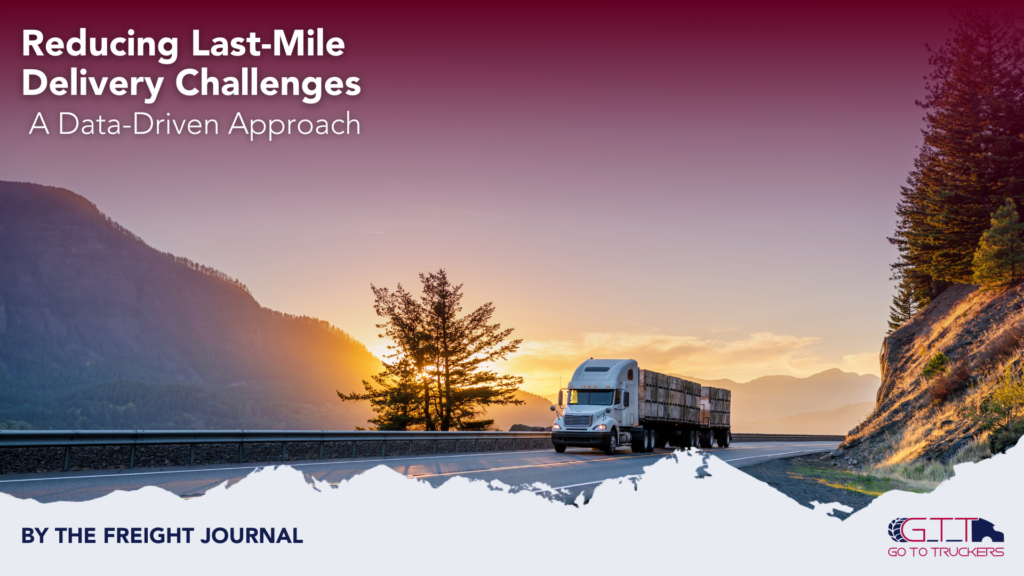
The last mile of delivery, the final leg of the journey from a distribution center to a customer’s doorstep, is often the most complex and costly part of the supply chain. It’s where numerous challenges converge, including traffic congestion, unpredictable delivery times, and customer expectations for speed and convenience. However, by adopting a data-driven approach, businesses can significantly mitigate these challenges and optimize their last-mile operations.
One of the primary insights gained from data analysis is the identification of bottlenecks and inefficiencies. By tracking delivery routes, times, and customer feedback, businesses can pinpoint areas where delays are frequent or customer satisfaction is low. This data can reveal patterns, such as specific times of day or locations where traffic congestion is particularly problematic. With this knowledge, businesses can adjust routes, delivery schedules, and resource allocation to minimize disruptions.
Real-time tracking data
Real-time tracking data is crucial for managing last-mile deliveries effectively. GPS tracking enables businesses to monitor the location of delivery vehicles in real time, allowing for proactive management of delays or issues. If a driver encounters an unexpected delay, the system can alert the customer and provide an updated delivery estimate. This level of transparency and communication enhances customer satisfaction and reduces frustration.
Predictive Analytics
Predictive analytics plays a significant role in optimizing last-mile delivery. By analyzing historical data on delivery times, traffic patterns, and weather conditions, businesses can forecast potential delays and adjust their operations accordingly. For example, if weather forecasts predict heavy rain or snow, businesses can proactively adjust delivery routes or schedules to avoid disruptions. Predictive analytics can also help optimize inventory management and resource allocation, ensuring that the right products are available at the right time and that delivery personnel are deployed efficiently.

Data-driven route optimization
Data-driven route optimization is another key strategy for reducing last-mile delivery challenges. By using algorithms that consider factors such as traffic conditions, delivery windows, and vehicle capacity, businesses can create the most efficient delivery routes. This not only reduces delivery times and fuel costs but also minimizes the environmental impact of deliveries. Real-time route adjustments can also be made based on changing conditions, such as unexpected traffic jams or road closures.
Customer data
Customer data is invaluable for personalizing the delivery experience and improving satisfaction. By analyzing data on customer preferences, such as preferred delivery times and locations, businesses can tailor their services to meet individual needs. This might include offering flexible delivery options, such as scheduled deliveries or delivery to secure lockers, or providing personalized delivery notifications and updates.
Here is a table summarizing some data-driven strategies for last-mile delivery:
| Strategy | Description | Benefits |
| Real-time Tracking | GPS monitoring of delivery vehicles | Increased transparency, proactive issue management |
| Predictive Analytics | Forecasting delays and optimizing resources | Reduced disruptions, improved efficiency |
| Route Optimization | Algorithm-driven route planning | Reduced delivery times and costs |
| Customer Data Analysis | Personalizing the delivery experience | Increased customer satisfaction |
Data analysis can also help identify areas for process improvement. By tracking key performance indicators (KPIs), such as delivery times, on-time delivery rates, and customer feedback scores, businesses can assess the effectiveness of their last-mile operations. This data can reveal areas where training or process changes are needed. For example, if delivery drivers are consistently experiencing delays at a particular location, it might indicate a need for additional training on navigating that area or a change to the delivery process.
In conclusion
A data-driven approach is essential for overcoming the challenges of last-mile delivery. By leveraging data insights, businesses can optimize routes, predict delays, personalize the customer experience, and improve overall efficiency. As customer expectations for fast and convenient deliveries continue to rise, businesses that embrace data-driven strategies will be best positioned to succeed in the competitive landscape of last-mile logistics.
In today’s fast-paced world, the last mile can make or break the customer experience. That’s why having a logistics partner who leverages technology and data as strategic tools makes all the difference. At Go To Truckers, we embrace data-driven solutions to overcome last-mile challenges, delivering smarter, faster, and more reliable service—because precision in the final mile is not optional, it’s essential.

No Comments yet!